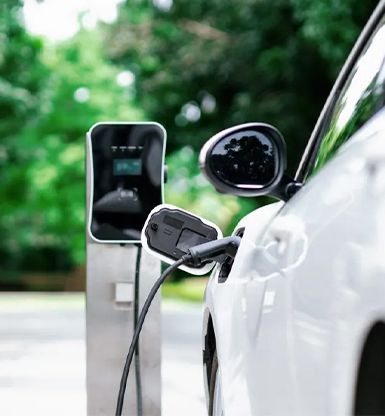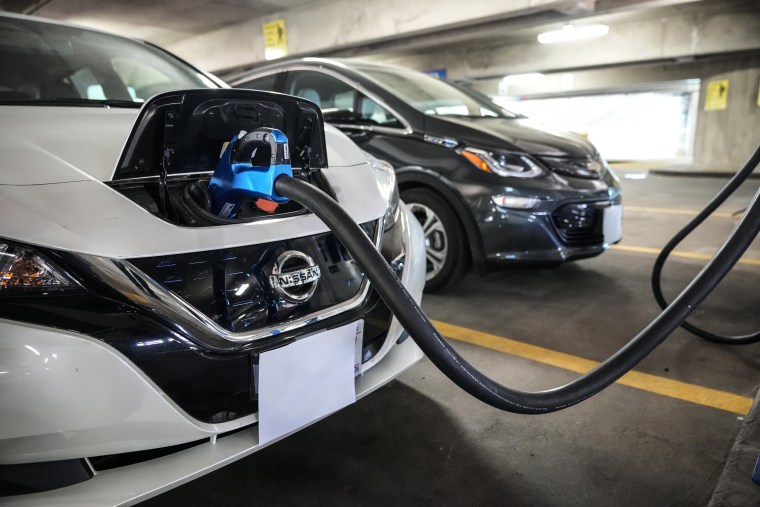Latest Trends and Insights You Need to Know Before You Buy EV Charging news
Top EV Charging Information: Trick Updates on Infrastructure and Development

Current Advancements in Fast-Charging Technology

Furthermore, innovations in battery modern technology, consisting of boosted thermal management systems and greater power density batteries, enhance fast-charging abilities. These developments alleviate the risk of battery deterioration during rapid charging, making sure longevity and efficiency for EV proprietors.
Additionally, the combination of smart charging options is improving user experience, allowing real-time monitoring and dynamic prices versions. EV Charging news. This adaptability allows motorists to optimize charging times and expenses based on grid demand
As car manufacturers continue to buy fast-charging networks, the partnership in between market stakeholders is critical. Collaborations between billing terminal service providers and auto manufacturers are leading the way for considerable insurance coverage, inevitably cultivating an extra durable EV ecosystem. These advancements are pivotal in sustaining the shift to lasting transportation.
Government Efforts for Charging Growth
Government efforts play a vital role in the development of electrical lorry (EV) billing infrastructure, facilitating the change to lasting transport. Different federal and state programs are being carried out to enhance billing availability, minimize the monetary worry on consumers, and advertise the adoption of electric lorries.
Especially, the U.S. federal government has actually assigned substantial funding with the Facilities Investment and Jobs Act, which sets aside $7.5 billion for EV charging network development throughout the country. This funding is targeted at releasing countless brand-new billing stations, specifically in underserved locations, consequently addressing range anxiousness among potential EV customers.
Furthermore, numerous states are establishing legislation to simplify the permitting procedure for billing station installments, which is important for accelerating implementation. Incentives such as tax obligation debts and rebates for both customers and businesses are additionally being presented to motivate the installment of charging framework.
Additionally, public-private partnerships are significantly becoming a focus, leveraging exclusive investment to match federal government funding. These campaigns underscore a collaborative method crucial for building a extensive and efficient EV charging network, inevitably adding to a greener and more sustainable future.
Innovative Battery Solutions Enhancing Effectiveness
Changing the landscape of electric car (EV) innovation, cutting-edge battery remedies are considerably improving performance and efficiency. Advances in battery chemistry, particularly with lithium-sulfur and solid-state batteries, are causing boosted power thickness, which permits longer ranges and faster charging times. These new battery kinds have the possible to outperform conventional lithium-ion batteries by providing higher abilities while reducing weight, thereby improving overall vehicle efficiency.
Moreover, growths in battery monitoring systems (BMS) are maximizing power use and prolonging battery life expectancy. Intelligent algorithms keep track of battery health and wellness and efficiency, allowing real-time adjustments to charging and releasing procedures. This not only improves the performance of the battery however additionally makes certain an extra reputable and sustainable power resource for EVs.
In addition, the assimilation of reusing technologies is addressing the ecological effect of battery production and disposal. Advancements in second-life applications for EV batteries are promoting their usage in energy storage space systems, adding to a circular economy.
As these why not look here cutting-edge battery services proceed to progress, they promise to change the EV market, making electric vehicles a lot more enticing and easily accessible to a broader target market while supporting international sustainability goals.

Cooperation In Between Automakers and Billing Networks
Identifying the critical need for a robust charging infrastructure, automakers are significantly teaming up with billing network carriers to boost the EV possession experience (EV Charging news). These collaborations intend to produce a smooth billing environment that profits consumers and supports the transition to electrical lorries
Significant vehicle brands are joining forces with established billing networks to broaden their charging station insurance coverage, making sure vehicle drivers have accessibility to dependable and convenient billing choices. Collaborations with networks like ChargePoint and Electrify America allow car manufacturers to integrate charging remedies directly right into their automobiles' navigation Check Out Your URL systems, leading individuals to the closest stations and giving real-time accessibility updates.
Moreover, these collaborations often cause the growth of fast-charging innovations that considerably lower the time required to recharge an EV. By merging resources and know-how, automakers and charging networks can innovate quicker, producing solutions that satisfy the expanding demand for electric wheelchair.
On top of that, joint campaigns may likewise bring about more standard billing protocols, which can ease consumer confusion and advertise broader EV adoption. Generally, these strategic alliances are essential in constructing a efficient and user-friendly billing infrastructure that meets the requirements of an increasing electrical vehicle market.
Obstacles Encountering EV Charging Infrastructure
As the electric automobile market remains to expand, several difficulties are emerging that prevent the growth of a comprehensive charging infrastructure. One of the main challenges is the not enough variety of billing terminals, particularly in underserved and rural urban areas. This space produces array anxiousness amongst possible EV customers, hindering them from making the button.
In addition, the absence of standardization in charging modern technology makes complex the facilities landscape. Variants in plug types and charging rates can develop confusion for customers and boost operational intricacies for billing network operators.
One more pushing problem is the high cost connected with the installation and upkeep of charging stations, which can be a barrier for both public entities and personal organizations. Finally, governing obstacles and zoning limitations can delay the implementation of charging facilities, impeding progression in increasing crucial services. Addressing these difficulties will certainly be essential for cultivating a robust EV community that sustains the transition to sustainable transport.
Conclusion
Finally, the continuous innovations in EV billing technology, supported by significant government initiatives and innovative battery services, are vital for the development and efficiency of electrical automobile framework. Cooperations in between automakers and charging companies further enhance station coverage, addressing the growing need for accessible billing choices. In spite of difficulties that persist within the EV charging landscape, these developments symbolize a favorable trajectory in the direction of a more efficient and lasting electrical vehicle ecosystem.
Innovations in billing infrastructure have led to the growth of ultra-fast chargers qualified of providing up to 350 kW of power, considerably decreasing charging times. Variants in plug types and billing rates can produce confusion for customers go now and boost operational intricacies for billing network drivers.In conclusion, the recurring innovations in EV charging technology, sustained by significant federal government efforts and innovative battery services, are essential for the development and effectiveness of electrical car framework. Partnerships between car manufacturers and charging service providers even more improve station protection, addressing the expanding demand for available billing options. Regardless of challenges that linger within the EV charging landscape, these developments represent a favorable trajectory towards a much more efficient and lasting electrical lorry environment.